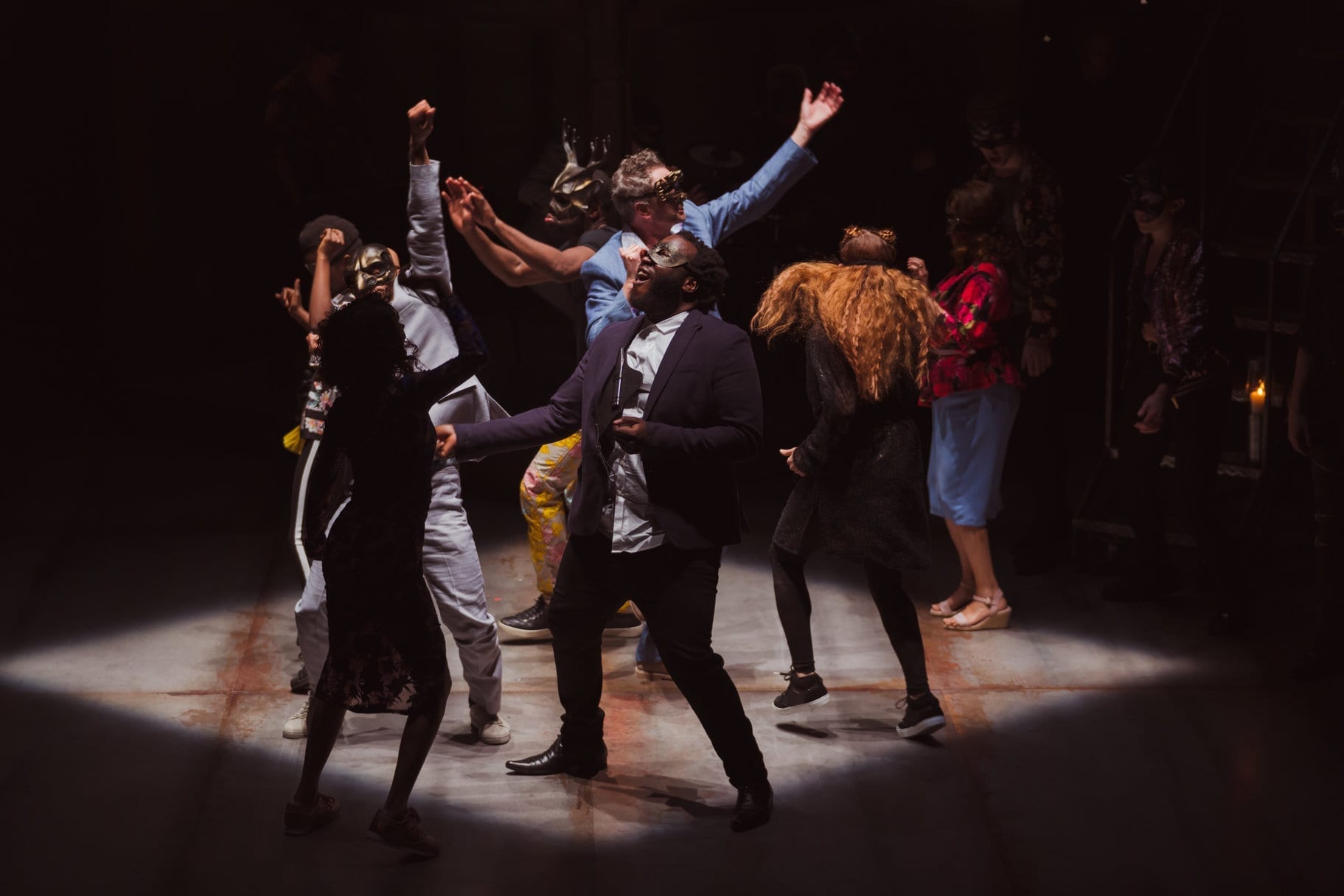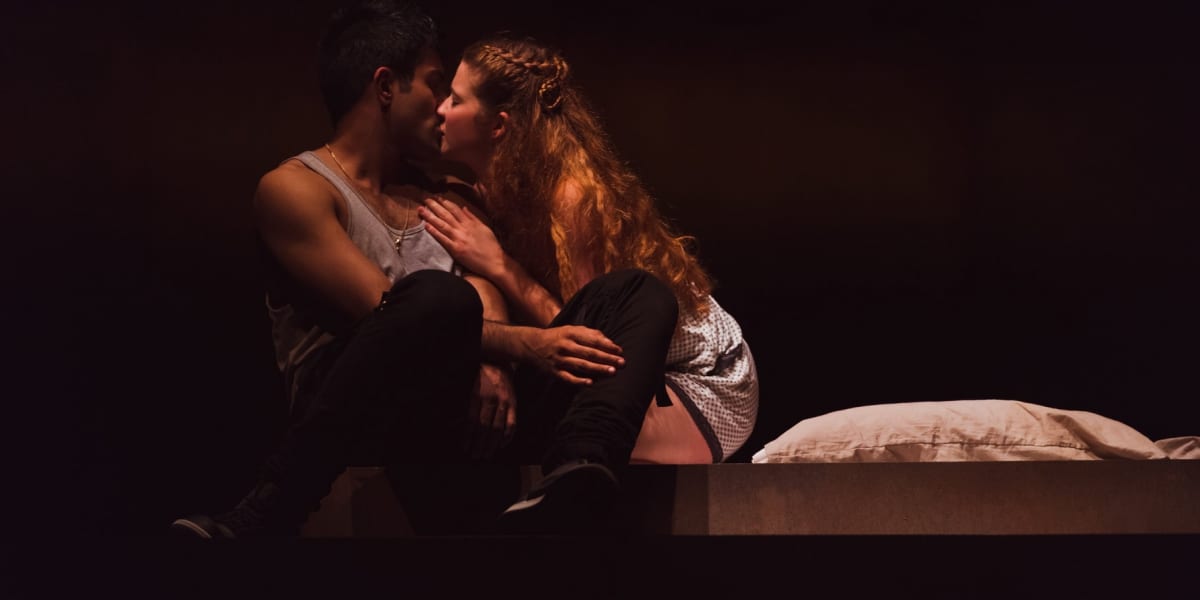The RSC’s production of Romeo and Juliet takes place on an almost entirely bare stage, the only set piece a concrete (or concrete-looking) cube in the centre; the walls and floor, too, are concrete. This Brutalist style is especially fitting in the context of the Barbican Centre, and suits the play well: Romeo and Juliet is built on contrasts, continually seeking to find a balance between opposites – hot and cold, love and hate, Capulet and Montague. This production bursts with vitality, intimacy, and warmth, all of which are beautifully set off against the cold, sparse staging. Its vivacity and contemporaneity recall Luhrmann’s 1996 Romeo + Juliet, but where Luhrmann’s film is luxurious and opulent, the RSC’s play is spare, stripping back the excess to expose the bare bones of the text.
The production is dynamic through and through, sparking with vitality. The central cube rotates and transforms into different settings, moving and unfolding alongside the plot; the cast members dance, run across the stage, climb scaffolding, and throw themselves to the floor. The casting is diverse – we have a female Prince and Mercutio, and a significant proportion of the main cast is non-white; there is also a range of accents on display, from West Indian to Scottish. Alongside the professional actors, young people from RSC Associate Schools in London perform in the chorus, contributing to an atmosphere of energetic youthfulness. The play itself is versatile, and the interpretation here embraces its multifacetedness – the production is raucously funny, as well as sincerely affecting. The textual absences are mined to good effect: Benvolio and the Nurse don’t appear in the playtext of the final scene, but this production brings them in, and does a lot with their silence. It would be good to see more exploration of Lady Capulet – she only really appears in two scenes, and the reasons behind this and her apparent distance from her daughter could be drawn out further. Generally, though, the production tackles the material very successfully, handling both humour and pathos with equal skill and sensitivity.

If the RSC’s production has a central motif, it is layers: layering comedy and tragedy, darkness and light. Rather than holding these binary pairings in balance, it maintains the tension between them; they slide over one another, are juxtaposed, unfold. Tybalt’s corpse is dragged off stage on a red cloth as the chamber is prepared – with similarly red flowers and candles – for Romeo and Juliet’s first night together; ghosts walk; death and life underpin each other. On a dynamic level, too, there is a sense of layering, with the play taking place across the stage’s heights and depths. The play’s darkness seems to be struggling to contain its vibrancy, and we do indeed catch glimpses of a brighter world beyond – for the scenes in Friar Lawrence’s cell, the concrete back screen splits in two to reveal a wall of greenery; it’s as though the promise of a better future, the potentiality of youth and new life, is just visible out of reach.
The production – rightly so – revolves around the central pairing of Romeo (Gill) and Juliet (Fishwick), who are both excellent. Fishwick gives a particularly strong performance; Gill is very funny, and endearing, but the play’s emotional core is primarily in Fishwick’s capable hands. Bennison, as her Nurse, is gloriously funny and very affectionate to her charge, and Finan gives an charming performance as Benvolio; Charlotte Josephine’s Mercutio is brilliantly cocky. The RSC has devised a production which is both tender and boisterous, intimate and explosive. Romeo and Juliet is at its best when it embraces, and – as in this production – delights in, the youthful exuberance of the characters; the pairing of the ridiculous and the sublime.

